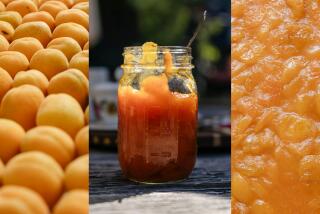Peaches and nectarines: How to choose, store and prepare
Peaches and nectarines are summer’s kissing cousins. In fact, they’re so closely related that occasionally a peach tree will bear nectarines and vice versa. Essentially, the difference between the two fruits comes down to fuzz (botanists call it pubescence). Peaches have it, nectarines don’t. There may be a slight difference in flavor as well. Peaches seem to have a muskier flavor, whereas nectarines tend to have a slight lemony note.
How to choose: It’s important to pay attention to color -- not the red blush, which is meaningless, but the background color, particularly around the stem. If you see some green, it means the fruit is not yet ripe. Leave it at room temperature for a day or two, though, and it will ripen just fine (don’t refrigerate a peach or nectarine until it is fully ripe). Also pay attention to the quality of the background color. Most peaches and nectarines are creamy yellow; look for ones that glow an orange-ish gold, they’ll be the sweetest and best-flavored.
How to store: Peaches and nectarines will continue to ripen after they’ve been harvested if you leave them at room temperature. They should never be refrigerated until they are fully ripe. Chilling them before that will result in fruit that is mealy and flavorless.
How to prepare: Peaches need to be peeled before cooking to avoid having stray bits floating loose in the dish, but nectarines don’t. To peel a peach, cut a shallow X in the blossom end and place the fruit in boiling water until you can see the peel start to lift away where it’s been cut. Depending on the ripeness of the peach, this can take anywhere from five seconds to a minute. Retrieve the peach with a slotted spoon and place it immediately in an ice-water bath to stop the cooking. The peel should just slip off; if it doesn’t, return the fruit the boiling water briefly.
More to Read
Eat your way across L.A.
Get our weekly Tasting Notes newsletter for reviews, news and more.
You may occasionally receive promotional content from the Los Angeles Times.






